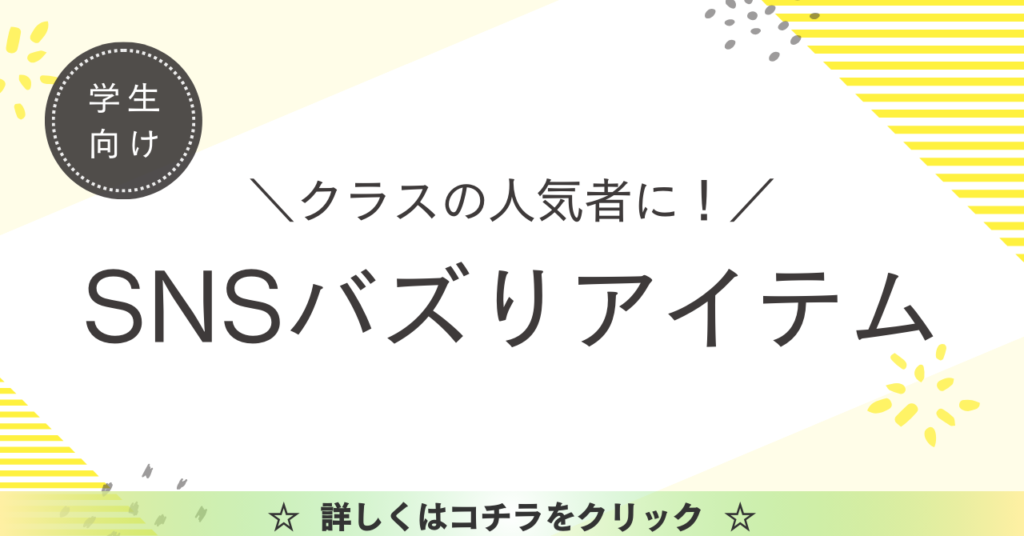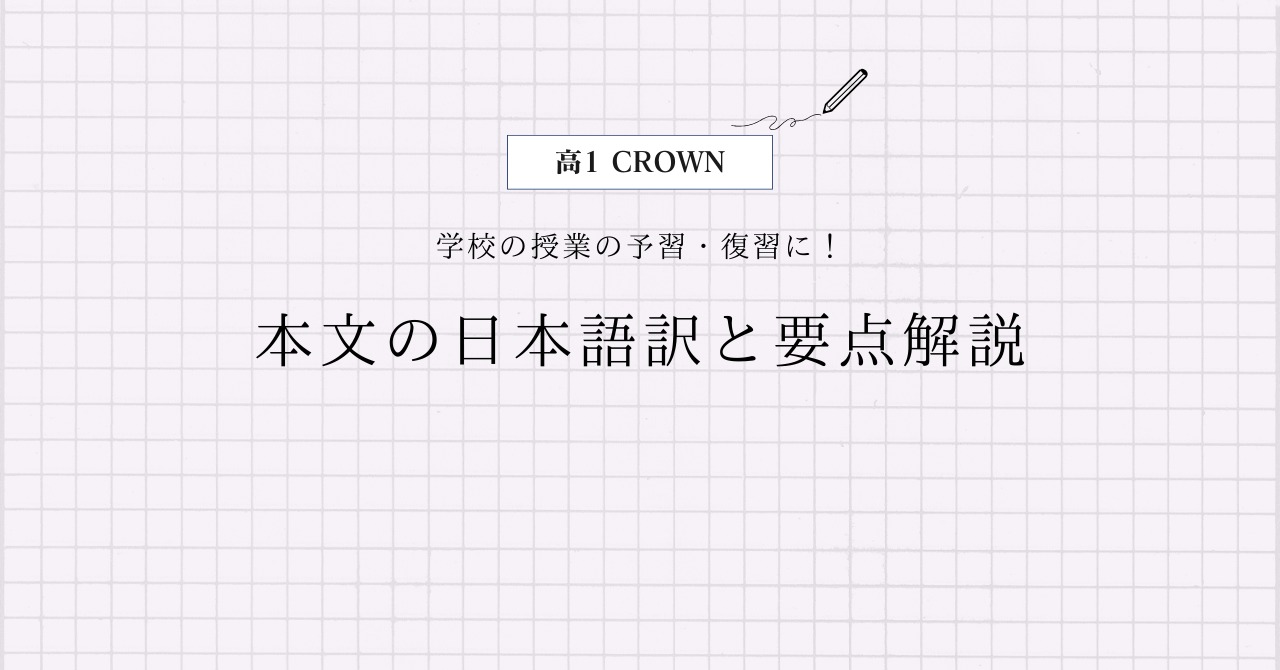三省堂 高1CROWN English Communication1 Lesson8 Section3の本文の日本語訳と重要箇所の解説です。
Section8-1, 8-2, 8-4の解説はこちらからご覧ください。
>高1CROWN English Communication1 Lesson8 Section1 本文和訳
>高1CROWN English Communication1 Lesson8 Section2 本文和訳
>高1CROWN English Communication1 Lesson8 Section4 本文和訳
- CROWN English Communication1 Lesson8 Section3 本文と日本語訳
- CROWN English Communication1 Lesson8 Section3 重要事項の解説
- Now let’s take a look at this picture.
- I’m sure some of you have seen it before.
- It was taken at the time of the Vietnam War in 1972.
- Here a young girl, Kim Phuc, is running down a road in pain, with her clothes burned off.
- This is what she once said about the experience:
- “I didn’t hear anything, but I saw the fire around me.
- And suddenly my clothes were gone because of the fire.
- And I saw the fire over my body, especially my arm.
- But my feet weren’t burned.
- I was crying, and I was running out of the fire.
- I kept running and running and running.
- “I was in the hospital. Fourteen months.
- I went through 17 operations to repair the burns over half my body.
- And that thing changed my life.
- It made me think about how I could help people.
- “When my parents first showed me the picture from the newspaper, I couldn’t believe that it was me, because it was so terrible.
- I want everybody to see that picture, because in that picture people can see what war is.
- It’s terrible for the children.
- You can see everything in my face.
- I want people to learn from it.”
- CROWN English Communication1 Lesson8 Section3 まとめ
CROWN English Communication1 Lesson8 Section3 本文と日本語訳
Now let’s take a look at this picture.
「では、この写真を見てみましょう。」
I’m sure some of you have seen it before.
「きっとあなたたちの中には、その写真を以前に見たことがある人もいると思います。」
It was taken at the time of the Vietnam War in 1972.
「それは1972年のベトナム戦争の時に撮られました。」
Here a young girl, Kim Phuc, is running down a road in pain, with her clothes burned off.
「この写真で、幼い女の子のキムフックさんが、服が焼き払われた状態で苦しみながら道路を駆け降りています。」
This is what she once said about the experience:
「これは、彼女がかつてその経験について言っていたことです。」
“I didn’t hear anything, but I saw the fire around me.
『私は何も聞こえなかったけど、私の周りに火が見えました。』
And suddenly my clothes were gone because of the fire.
『そして突然、私の服が火のせいで無くなりました。』
And I saw the fire over my body, especially my arm.
『そして私の体、特に腕に火が広がりました。』
But my feet weren’t burned.
『でも私の足は燃えませんでした。』
I was crying, and I was running out of the fire.
『私は泣き叫んで、火から逃げ出していました。』
I kept running and running and running.
『走って、走って、走り続けました。』
“I was in the hospital. Fourteen months.
『私は入院しました。14ヶ月です。』
I went through 17 operations to repair the burns over half my body.
『体の半分に広がった火傷を治療するために、17回の手術を経験しました。』
And that thing changed my life.
『そしてそのことが私の人生を変えました。』
It made me think about how I could help people.
『そのことから、私はどうすれば人々を助けることができるのかを考えるようになりました。』
“When my parents first showed me the picture from the newspaper, I couldn’t believe that it was me, because it was so terrible.
『両親が初めて新聞の写真を私に見せてくれたとき、とてもひどい姿だったので、それが自分だと信じられませんでした。』
I want everybody to see that picture, because in that picture people can see what war is.
『私はみなさんにあの写真を見てほしいです。なぜならあの写真に、戦争とは何なのかを見ることができるからです。』
It’s terrible for the children.
『戦争は子どもたちにとって恐ろしいものです。』
You can see everything in my face.
『私の顔がすべてを物語っています。』
I want people to learn from it.”
『みなさんにその写真から学んでほしいのです。』

CROWN English Communication1 Lesson8 Section3 重要事項の解説
Now let’s take a look at this picture.
“now”は「では」くらいでOKです。
“Let’s 動詞の原形”は「~しましょう」ですね。
同じ意味で“Shall we~?”や“Why don’t we~?”もあるのでセットで覚えましょう!
“take a look at~”は「~に目を通す」といった意味ですが、今回はふつうに「見てみる」と訳しました。
I’m sure some of you have seen it before.
“be sure (that)~”は「きっと~だと思う」という重要表現です。
“some of~”は「~の一部」といった意味ですが、「~という人もいる」くらいで訳すと綺麗な日本語になりやすいです。
“have seen”は「現在完了の経験用法」で、“it”は“this picture”を指していますね。
“before”は「以前に」という副詞になります。
It was taken at the time of the Vietnam War in 1972.
“It”は“this picture”を指していますね。また、この文は「受動態」になっています。
“of”は前置詞で,”A of B”の形で「BのA」というように後ろから前に訳します。
“Vietnam War”は「ベトナム戦争」です。
Here a young girl, Kim Phuc, is running down a road in pain, with her clothes burned off.
“here”は「ここに、ここでは」といった副詞ですね。
“a young girl“と“Kim Phuc“は「同格語」になります。“名詞,名詞”の並びは「同格語」の可能性が高いですよ!
また、この文は「現在進行形」になっていますね。
“run down~”は「を駆け降りる」といった意味で、“road”は「道、道路」という名詞、“in pain”は「苦しみながら、苦痛の中で」といった表現になります。
“with”は「~という状態で」という「付帯状況」を表します。“clothes”は「衣服」という名詞ですね。
“burn off”は「を焼き払う」という表現で、ここでは「過去分詞」として“her clothes”を修飾しています。
This is what she once said about the experience:
“what”は「関係代名詞」で,“what”1語で“the thing(s) that~(~ということ・もの)”という意味を持ちます。今回は「目的格の関係代名詞」ですね。
“once”は「かつて」という副詞、“experience”は「体験、経験」という名詞になります。
「:」は「コロン」と言い,簡単に言うと「つまり」という具合に直前の文章を補足します。コロンを使うときは,コロンの前は必ず文にしないといけない点に注意してください。
“I didn’t hear anything, but I saw the fire around me.
“anything”は否定文で使うと「何も~ない」という意味になります。
“fire”は「火、炎」という名詞、“around”は「~の周りに」という前置詞です。
And suddenly my clothes were gone because of the fire.
“suddenly”は「突然に」という副詞で、“gone”は「無くなった」という形容詞です。
“because of~”は「~が理由で」という重要表現ですね。
And I saw the fire over my body, especially my arm.
“over”は「~の一面に」といった意味もある前置詞です。今回は「広がる」と訳しています。
“body”は「体」、“arm”は「腕」という名詞で、“especially”は「特に」という副詞になります。
また、この文は直訳すると「そして私は体、特に腕に広がる火を見ました」ですが、「火が広がっていました」と訳しています。
But my feet weren’t burned.
“feet”は“foot(足)”の複数形で、“burn”は「を焼く、火傷させる」という動詞です。
この文は「受動態」になっていますね。
I was crying, and I was running out of the fire.
この文は「過去進行形」になっていますね。
“cry”は「泣く、叫ぶ」、“run out of~”は「から逃げ出す、を使い果たす」という表現です。
I kept running and running and running.
“keep -ing”は「~し続ける」という重要表現です。
“keep on -ing”のように、“on”を入れてもOKです。
“I was in the hospital. Fourteen months.
“hospital”は「病院」という名詞ですね。今回は「入院」と訳しました。
I went through 17 operations to repair the burns over half my body.
“go through~”は「を経験する」という重要表現で、“operation”は「手術、操作」といった名詞です。
“repair”は「を直す、治療する」という動詞で、ここでは「不定詞の副詞的用法」になっていますね。
“burn”は「火傷」という名詞で、“half”は「半分の」という形容詞になります。
And that thing changed my life.
“that”は「その」と訳してOKで、“thing”は「もの、こと」という名詞ですね。
“that thing”は直前の文全体を指しています。
“change”は「を変える」という動詞で、“life”は「生活、人生、命」という名詞になります。
It made me think about how I could help people.
“It”は“that thing”を指していますね。
“make 人・もの 動詞の原形”で「人・ものに~させる」という使役の意味になります。
また,今回のように主語が「人」ではないときは,「~によって,~から」といった意味で主語を訳して,”make”の後ろの目的語を主語のように訳すと綺麗な日本語になりやすいです。
“how I could help people”は「間接疑問文」になっていますね。
“When my parents first showed me the picture from the newspaper, I couldn’t believe that it was me, because it was so terrible.
“parent”は「親」、“newspaper”は「新聞」という名詞、“first”は「初めて、最初に」という副詞です。
“show 人 もの”で「人にものを示す,見せる」となって,“show もの to 人”でも同じ意味になります。
“believe”は「を信じる」という動詞で、後ろには「接続詞that」がありますね。
“it”は2つとも“the picture from the newspaper”を指しています。
“so”は「とても」という副詞で、“very”と同じです。“terrible”は「ひどい、恐ろしい」という形容詞になります。
I want everybody to see that picture, because in that picture people can see what war is.
“want 人 to 動詞の原形”で「人に~してほしい」という重要表現です。
“everybody”は「みんな」、“war”は「戦争」という名詞ですね。
“what war is”は「間接疑問文」になっています。
It’s terrible for the children.
“It”は“war”を指しています。
“for”は「~にとって」という前置詞ですね。
You can see everything in my face.
“everything”は「すべてのこと」、“face”は「顔」という名詞ですね。
直訳すると「あなたは私の顔にすべてのことを見ることができる」となるので、「私の顔がすべてを物語っている」としました。
I want people to learn from it.”
ここでも“want 人 to 動詞の原形”で「人に~してほしい」が使われていますね。
“learn”は「を学ぶ、習得する」という動詞で、最後の“it”は写真のことを指しています。
CROWN English Communication1 Lesson8 Section3 まとめ
以上がCROWN English Communication1 Lesson8 Section3の日本語訳となります。
「関係代名詞」「使役動詞」などの使い方をしっかり確認しておきましょう!
>高1CROWN English Communication1 Lesson8 Section1 本文和訳
>高1CROWN English Communication1 Lesson8 Section2 本文和訳
>高1CROWN English Communication1 Lesson8 Section4 本文和訳
何か分からない点や他に解説してほしい点があれば,お気軽にコメントしてください!



コメント